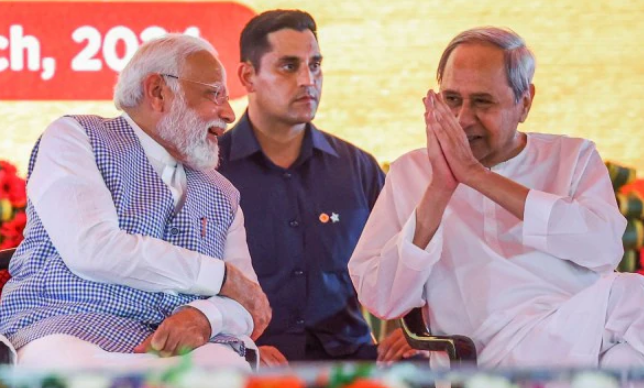Naveen Patnaik, the chief minister of Orissa, announced on Saturday night that he would go to the polls on his own, and that his 11-year agreement with the saffron camp was off. This is a big setback for the National Democratic Alliance (NDA) campaign, which is a major challenge for the BJP-BJD alliance.
The negotiations between Patnaik and the BJP came to an abrupt stop when the leader of the BJD made a “humiliating” offer of only approximately half a dozen Lok Sabha seats out of the total of 21 seats in Orissa.
Even though the BJP did not comment following the conclusion of the negotiations, the senior leadership of the party will meet in Delhi on Sunday to assess the current position.
Patnaik was not very interested in maintaining his alliance with the BJP because he proposed conditions that the saffron party would not have been able to accede to, even if it took a significant amount of effort to do so. It would appear that the leader of the BJD is confident that he is in a stronger position to win the Lok Sabha and assembly elections if the BJP is kept out of the equation.
“We were putting a lot of emphasis on the winnability component, but unfortunately, this did not occur. Following the failure of the discussions, Patnaik stated that it is now abundantly evident that we will be responsible for the elections on our own.
The Bharatiya Janata Party (BJP) has, even though there is evidence on the ground suggesting that the party has been slowly declining, been caught off guard. Even in the tribal belt which is located in western Orissa, the BJD has started to gain more seats in the elections for the local body. The Bharatiya Janata Party (BJP) has failed to recognize that its appeal is becoming increasingly limited to only its core cadres and that occurrences such as Kandhamal have only caused a surge among the devout.
If the numbers work out, Patnaik may still be open to a post-election arrangement with the National Democratic Alliance (NDA), according to the leaders of the Bharatiya Janata Party (BJP), who believe that Patnaik has made a calculated decision that may improve his status as a regional leader. If such a circumstance materialized, the BJD could consider adopting a “third front” configuration as well. On the other hand, the vicious streak that Patnaik has displayed has astonished the BJP, even though he has demonstrated it in dealing with individuals inside his party who are inconvenient.
There is a perception that the aggressive move that the BJD has taken is also based on the party's assessment that it is gaining not only at the expense of the BJP but also eating into the support that the Congress party has. Over many years, the BJD has been able to capitalize on the fact that both Congress and the BJP are plagued with leadership that fails to inspire its followers.
Patnaik kept the Bharatiya Janata Party (BJP) on edge throughout the day. During the time that Naveen was leaving for Ganjam to campaign, the core group of the BJP continued to have meetings behind closed doors at the party office. The core group consisted of Suresh Pujari, who was the state president of the party, Biswabhusan Harichandan, Dharmendra Pradhan, Jual Oram, Manmohan Samal, Kharabela Swain, Prasanna Mishra, Panchanan Rout, and V Satish, who was the BJP all-India joint general secretary in charge of Orissa.
Against the backdrop of a one-on-one conversation that took place on Friday night between Naveen Patnaik and Chandan Mitra, an ambassador of the Bharatiya Janata Party (BJP) from New Delhi, over the thorny topic of seat sharing for the next assembly and Lok Sabha elections, the meeting was called. On Friday, Mitra had made a meeting with Naveen after receiving briefings from the leadership of the state BJP. Following his departure from Naveen Niwas, he delivered a statement that made it abundantly clear that the meeting did not produce any significant breakthroughs. “Details of the meeting cannot be discussed before the media,” said the politician. Additionally, he stated that both parties were investigating the situation on the ground.
According to the sources, Mitra communicated with the core group about the specifics of his conversations with Patnaik and inquired about the opinions of the state leadership over whether or not they would agree with the BJD formula. To increase the number of seats that were up for election, the BJD was adamant about demolishing the 84:63 and 12:9 ratios that were in place for the assembly and Lok Sabha seats, respectively. In addition to this, it also desired to reserve the power to select the seats for the BJP.
There was no way that this could be tolerated. There was also a discussion at the BJP meeting about the likelihood of the BJD fielding dissidents to undermine the position of the BJP, regardless of whether or not there was an alliance.
